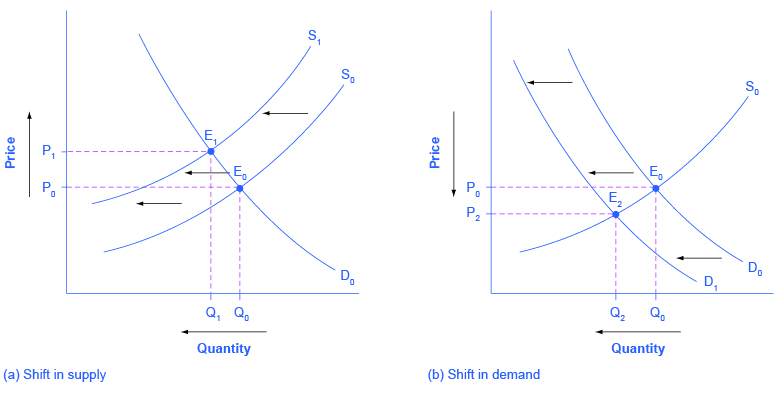| << Chapter < Page | Chapter >> Page > |
The decline in print news reading predates 2004. Print newspaper circulation peaked in 1973 and has declined since then due to competition from television and radio news. In 1991, 55% of Americans indicated they got their news from print sources, while only 29% did so in 2012. Radio news has followed a similar path in recent decades, with the share of Americans getting their news from radio declining from 54% in 1991 to 33% in 2012. Television news has held its own over the last 15 years, with a market share staying in the mid to upper fifties. What does this suggest for the future, given that two-thirds of Americans under 30 years old say they do not get their news from television at all?
In the real world, many factors that affect demand and supply can change all at once. For example, the demand for cars might increase because of rising incomes and population, and it might decrease because of rising gasoline prices (a complementary good). Likewise, the supply of cars might increase because of innovative new technologies that reduce the cost of car production, and it might decrease as a result of new government regulations requiring the installation of costly pollution-control technology.
Moreover, rising incomes and population or changes in gasoline prices will affect many markets, not just cars. How can an economist sort out all these interconnected events? The answer lies in the ceteris paribus assumption. Look at how each economic event affects each market, one event at a time, holding all else constant. Then combine the analyses to see the net effect.
The U.S. Postal Service is facing difficult challenges. Compensation for postal workers tends to increase most years due to cost-of-living increases. At the same time, more and more people are using email, text, and other digital message forms such as Facebook and Twitter to communicate with friends and others. What does this suggest about the continued viability of the Postal Service? [link] and the text below illustrates using the four-step analysis to answer this question.

Since this problem involves two disturbances, we need two four-step analyses, the first to analyze the effects of higher compensation for postal workers, the second to analyze the effects of many people switching from “snailmail” to email and other digital messages.
[link] (a) shows the shift in supply discussed in the following steps.
Step 1. Draw a demand and supply model to illustrate what the market for the U.S. Postal Service looked like before this scenario starts. The demand curve D 0 and the supply curve S 0 show the original relationships.

Notification Switch
Would you like to follow the 'Principles of economics' conversation and receive update notifications?